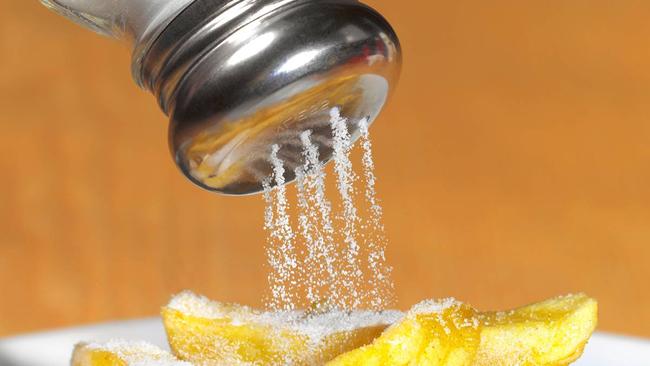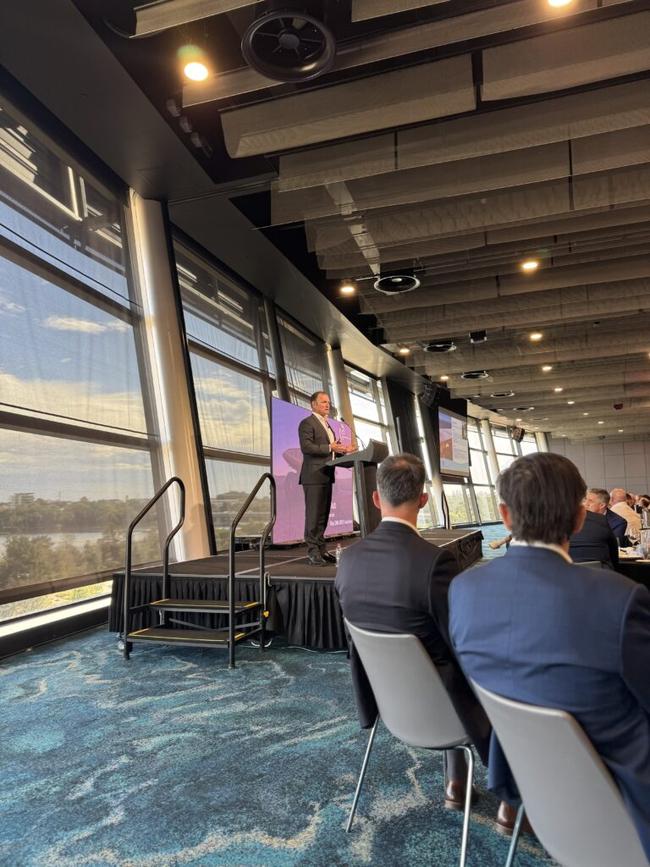Monsters of Rock: BCI fielding early enquiries from sodium-ion battery companies as Mardie production closes in
The newest salt producer in Australia sees the potential to become a supplier into the emerging sodium ion battery sector.

BCI Minerals aiming to open first salt project in WA in decades
Demand is growing from industrial salt customers, with early inquiries coming from sodium ion battery producers
ASX mining stocks fall in rough week
A company building the largest salt project in Australia in the sunny and minerals rich Pilbara region says it has already fielded enquiries from sodium-ion battery producers as it looks to bring the first development of the commodity in over 25 years to life in WA.
Speaking at a WA Mining Club function on Thursday, BCI Minerals (ASX:BCI) managing director David Boshoff said momentum was growing behind the lithium ion battery disrupting sector, which promises to produce cheaper and lighter batteries for EVs and other energy storage applications.
It is still a peripheral market for BCI, which will bring what it deems the third largest standalone sodium chloride project in the world online by the second half of 2026 at Mardie, around 120km southwest of Rio Tinto's Dampier Salt operations.
While most investors probably think about those operations as producing 'common table salt', Boshoff said the end users of Mardie's high-purity product will actually come from chemical manufacturers whose products are used to create ceramics, PVC and more – the materials that make up the containers your salt is carried in.
"Recently, we've been in contact with sodium ion battery producers and that technology has advanced significantly. Currently, there are vehicles in production that's got both a lithium battery as well as a sodium ion battery in the vehicle," Boshoff said.
"Of course they're very stable, the salt batteries, the sodium batteries. But also a lighter battery so (it) creates a longer range. So (it'll be) interesting to see how those elements are starting to impact the market going forward."
BCI has binding offtake agreements with customers in China, Indonesia and the Japan-Korea-Taiwan region, with demand growing as industrial activity ramps up across Southeast Asia.
Leading Chinese battery maker CATL has said it plans to begin mass production of an EV grade sodium ion battery by the end of 2025 and could displace as much as half the market for lower range lithium-iron-phosphate electric vehicles.

SoP
$837 million capped BCI is well off its 2021 highs but up around 81% over the past five years.
Once a junior iron ore player, the Kerry Stokes-backed developer's journey to production has been propped up by a string of equity raises and government finance as construction costs for Mardie have risen.
A DFS gave a total capital estimate of $779m back in 2021, but those numbers were quickly revised as construction costs blew through the roof post-Covid.
From 2023 the firm has been working on a base case capex of $1.421bn, with a contingency outside that of $208m.
It closed a $981m debt facility last year, including $490m from Canberra's Northern Australia Infrastructure Facility and $160m from Export Finance Australia.
The feds will be keen to see a return on that investment after a string of busts on loans for potash projects across WA, including the collapse of Kalium Lakes and Salt Lake Potash.
They had promised to deliver a high-quality sulphate of potash (SoP) product to international markets which used solar evaporation rather than the energy intensive Mannheim process, which converts lower quality muriate of potash into the higher purity SoP.
Boshoff remains bullish on the need for more SoP to fuel a growing middle class in Asia consuming higher quality fruit and vegetables which need SoP to thrive.
But its 140,000tpa SoP phase is rather an add-on to the main 5.35Mtpa salt operation, with Boshoff saying the company wanted to get the production process for the cursed co-product right via a long testing process.
"I think it's well known in the room that there's been some difficulty in getting SoP projects up successfully. We do have a couple of advantages," Boshoff said.
"Of course, we're on the coast, so from a cost of transportation perspective that gives a disadvantage.
"Also SoP is a by-product of the salt production, so our main revenue will be coming from the salt itself, and if you produce (SoP) as a by-product we have the luxury of time."
Port deal
The other conundrum for BCI is its port terminal at Cape Preston West, which will be used at capacity just 17% of the time.
That could open the door for smaller players to access the facility, with junior iron ore developers perpetually facing the challenge of accessing port space in a crowded infrastructure network dominated by BHP, Rio Tinto, Fortescue, Roy Hill/Hancock Prospecting and MinRes.
Boshoff said so far eight proponents had delivered expressions of interest to secure berth access at the port.
In recent times junior iron ore stocks have increasingly become prey for the large players. Infrastructure solutions are a key aspect of cost control, and without control over their supply chain, it's been easier for juniors like Red Hawk Mining and CZR Resources (ASX:CZR) to sell their deposits or companies into larger players looking for resource optionality like Fortescue (ASX:FMG) and Rio Tinto (ASX:RIO).
"Now it's a bit of a chicken and egg for some of these operations," Boshoff said.
"For them to be able to start their operation ... they have to have access first so the business model can work. They get to work out their trucking costs. So I think some of these things will take a bit of time to get off the ground. But I think certainly it creates a great avenue for this capacity."
What else is going on in large cap land?
The market is awash with speculation about Glencore's future plans, as the AFR reported it has been moving a string of foreign assets worth around US$30bn into an Australian company.
That could open the door, again, to a potential merger with Rio, reputedly discussed last year, with the Aussie-Anglo mining giant's CEO Jakob Stausholm stepping down later this year.
Stausholm had been dismissive of large-scale M&A over his tenure at Rio, preferring to focus on smaller deals in niche spaces like lithium. But his exit could herald a change in direction, with the miner equally facing pressure from some investors to collapse its dual company structure and domicile primarily in Australia, the subjected of a failed shareholder vote at the company's recent AGMs.
The ASX 300 Metals and Mining index fell 1.16% over the past week.
Which ASX 300 Resources stocks have impressed and depressed?
Making gains
MAC Copper (ASX:MAC) (copper) +23.2%
Capstone Copper Corp (ASX:CSC) (copper) +12.6%
Bellevue Gold (ASX:BGL) (gold) +6.3%
Ora Banda (ASX:OBM) (gold) +5.7%
Eating losses
Coronado Global Resources (ASX:CRN) (coal) -11.1%
Predictive Discovery (ASX:PDI) (gold) -8.3%
Mineral Resources (ASX:MIN) (lithium/iron ore) -7.2%
Vulcan Energy Resources (ASX:VUL) (lithium) -5.8
Coronado sunk again as rumours swirled the embattled coal miner could fall prey to a hostile bottom of the market takeover from Czech distressed assets billionaire Pavel Tykac's Se.ven Global Investments after the firm bought up a bunch of its debt on the cheap. PDI was down after the Guinean Government revoked some of its gold permits, though not the ones under its flagship Bankan deposit, and MinRes copped a hit after cutting guidance again from its Onslow Iron operation.
MAC Copper meanwhile led the ASX 300 mining sector after the Cobar copper mine operator agreed to a US$1.03bn ($1.6bn) takeover from Harmony Gold.


